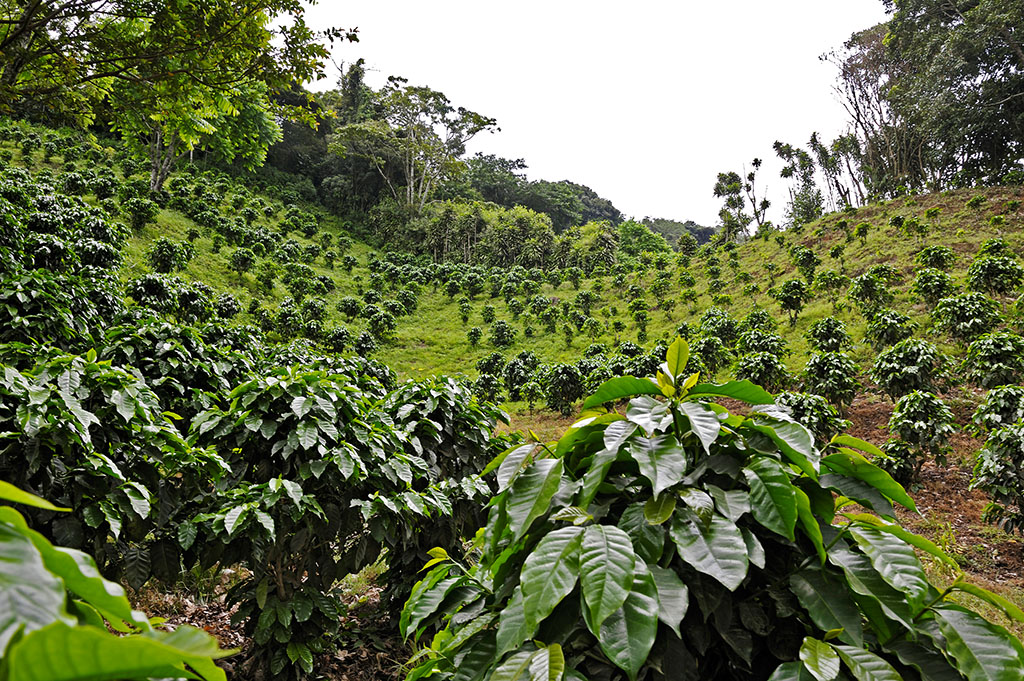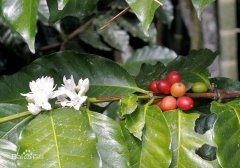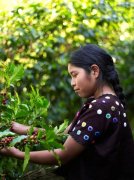Honduras Honduras San Juan Theodore American Fine Coffee
Because Honduras is located in the tropics, San Juan likes to have less temperature variation throughout the year. Therefore, the so-called winter is actually the rainy season, and the so-called summer is actually the dry season. In the tropics, altitude has a greater effect on temperature than the length of precipitation in the year. San Juan Cito's geographical location is above 1239 meters above sea level, making the temperature slightly cooler throughout the year. In summer (March-June), the highest temperatures tend to be 26 ° C. C, and the lowest temperature is about 18? C。The average temperature in winter is 20. C, the lowest is about 14. C.

San Juan Cito's modern economy is largely dependent on agriculture, much of it small-scale coffee production, and its climate and altitude are very conducive to producing high-quality coffee beans. COMISAJUL, a cooperative of hundreds of small coffee farmers in central Honduras, is located in San Juan Cito. COMISAJUL is a cooperative of hundreds of coffee farmers in San Juan Cido, where coffee is grown at an altitude of 1450-1550 meters and shaded by banana, avocado, papaya and other fruit trees. Coffee farmers hand-pick ripe fruit during harvest season, wash it and then dry it in the sun. The fermented water produced by washing with coffee peel pulp is collected and used as fertilizer for coffee trees. This batch of coffee tastes very clean, sweet, very mild acidity, with milk chocolate flavor.
Important Notice :
前街咖啡 FrontStreet Coffee has moved to new addredd:
FrontStreet Coffee Address: 315,Donghua East Road,GuangZhou
Tel:020 38364473
- Prev

American coffee beans in the micro-producing areas of the Santa Rita Andes, Colombia
The history of coffee cultivation in Colombia can be traced back to the Spanish colonial era in the 16th century, and there are many theories about the history of coffee in Colombia: one: it is said to come from the island of Haiti in the Caribbean and from El Salvador in Central America. Second: in 1808, a priest introduced coffee beans to Colombia for the first time from the French Antilles via Venezuela. One of them
- Next

Guava Plain Manor, New Oriental region of Guatemala, Central and South American Coffee
Guatemala is one of the most important coffee producing countries in Central America, with long mountains and different regional climates, thus creating eight major coffee producing areas in Guatemala, all located on the highland topography of the subtropical climate, with abundant and stable rainfall and fertile volcanic ash soil is an excellent environment for coffee trees to grow. Plan del Guayabo is located next to the Volcn de Suchitn volcano.
Related
- Does Rose Summer choose Blue, Green or Red? Detailed explanation of Rose Summer Coffee plots and Classification in Panamanian Jade Manor
- What is the difference between the origin, producing area, processing plant, cooperative and manor of coffee beans?
- How fine does the espresso powder fit? how to grind the espresso?
- Sca coffee roasting degree color card coffee roasting degree 8 roasting color values what do you mean?
- The practice of lattes: how to make lattes at home
- Introduction to Indonesian Fine Coffee beans-- Java Coffee producing area of Indonesian Arabica Coffee
- How much will the flavor of light and medium roasted rose summer be expressed? What baking level is rose summer suitable for?
- Introduction to the characteristics of washing, sun-drying or wet-planing coffee commonly used in Mantenin, Indonesia
- Price characteristics of Arabica Coffee Bean Starbucks introduction to Manning Coffee Bean Taste producing area Variety Manor
- What is the authentic Yega flavor? What are the flavor characteristics of the really excellent Yejasuffi coffee beans?

